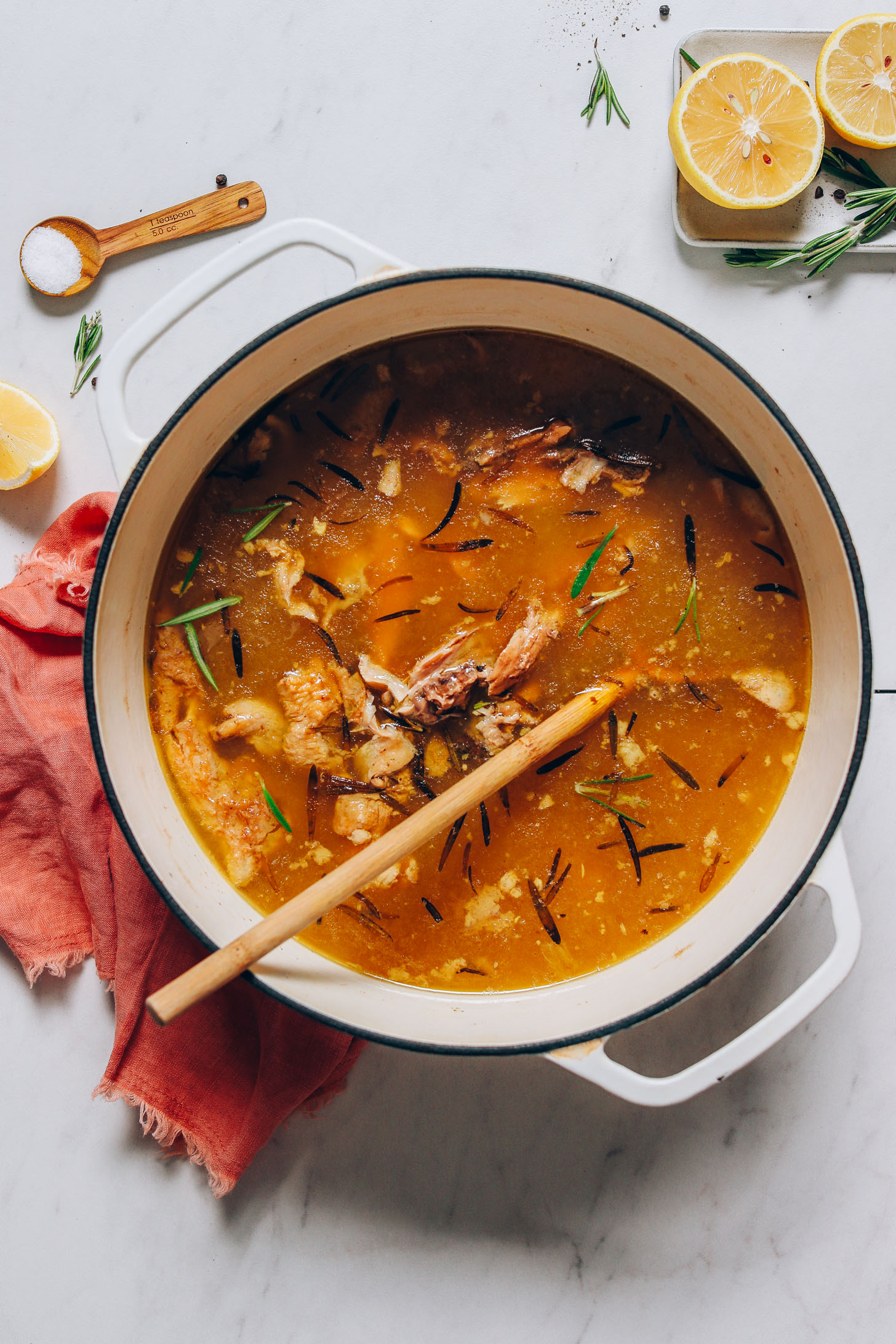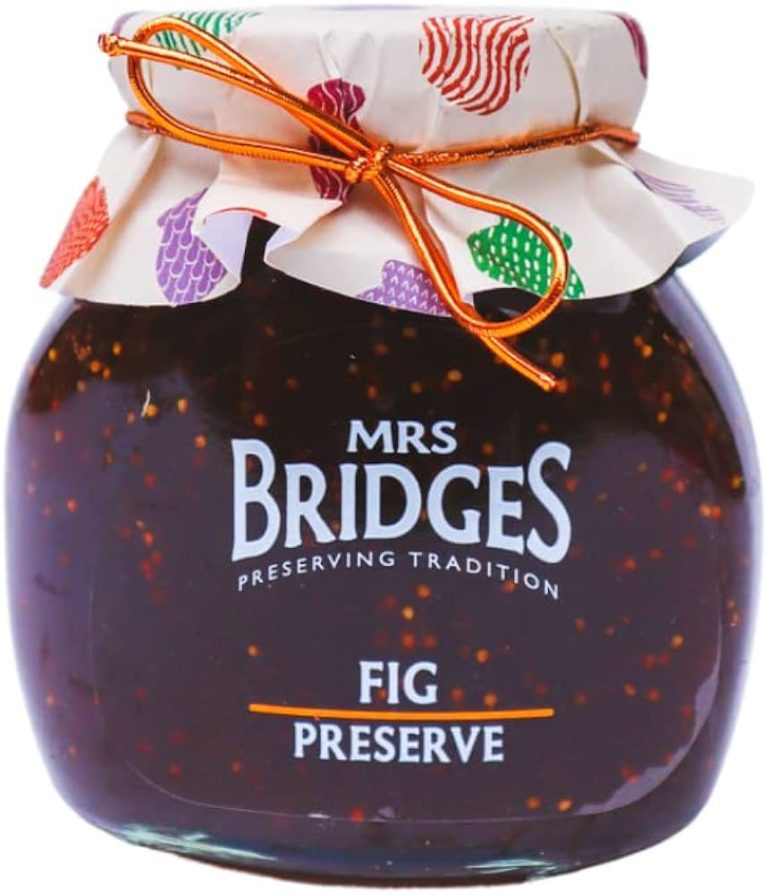Slow Cooker Bone Broth: Recipes, Tips, Benefits, and Storage
Slow cooker bone broth provides a rich source of essential nutrients. It contains minerals like calcium, magnesium, and phosphorus. These minerals are crucial for bone health and metabolic functions. Amino acids such as glycine and proline, which are present in bone broth, contribute to protein synthesis and tissue repair. Collagen extracted from bones during the slow cooking process supports skin elasticity and joint health. The extended cooking time allows these nutrients to fully infuse into the broth, making it a nutrient-dense addition to your diet.
Health Advantages
Slow cooker bone broth offers numerous health benefits, promoting overall wellness. Regular consumption of bone broth can support gut health due to its gelatin content, which helps in healing the gut lining. This is particularly beneficial for those with digestive issues like leaky gut syndrome. The broth’s anti-inflammatory properties assist in reducing joint pain and inflammation. Bone broth is also known to boost the immune system, thanks to its rich nutrient profile and immune-boosting compounds. Its high protein content aids in muscle building and repair, making it a valuable dietary element for active individuals. Additionally, consuming bone broth can improve hydration and provide relief from cold and flu symptoms.
Choosing the Right Ingredients
Types of Bones to Use
Selecting the correct bones forms the foundation of a nutrient-rich, flavorful broth. Opt for bones high in collagen, such as knuckles, joints, feet, and marrow bones. Chicken feet, beef knuckles, and pork trotters are excellent choices. These bones release gelatin during slow cooking, resulting in a rich and nourishing broth.
For a balanced flavor, mix different bone types. Using a variety like chicken carcasses, beef marrow bones, and pork neck bones provides depth and complexity to the broth. Sourcing bones from organic, pasture-raised animals ensures they are free from hormones and antibiotics, contributing to a cleaner, healthier end product.
Additional Ingredients for Enhanced Flavor
Enhancing the flavor of your bone broth involves adding complementary ingredients. Aromatics like onions, garlic, and celery introduce robust flavors. Use two onions, four garlic cloves, and three celery stalks per batch.
Herbs and spices infuse the broth with additional layers of taste. Include a handful of fresh parsley, two bay leaves, and a teaspoon of peppercorns. For a richer profile, add a splash of apple cider vinegar (one tablespoon per quart); this helps extract minerals from the bones.
Vegetables like carrots and leeks contribute sweetness and depth. Use two large carrots and one leek, chopped. Avoid cruciferous vegetables like broccoli or cabbage, which can impart a bitter flavor to the broth.
Incorporating these ingredients enhances both the nutritional value and taste of your slow cooker bone broth, making it a delicious and beneficial addition to any diet.
Step-by-Step Guide to Making Bone Broth in a Slow Cooker
Preparation Steps
Gather all ingredients first. Use bones high in collagen, such as knuckles, joints, feet, and marrow bones, for a rich broth. Mix different bone types for a more beneficial broth. Add vegetables like carrots, celery, and leeks for added flavor and nutrients. Incorporate aromatics, herbs, and spices, like thyme, bay leaves, and peppercorns, to enhance the taste.
Rinse bones under cold water to remove impurities. For a deeper flavor, roast bones in the oven at 400°F for 30 minutes, turning halfway through. Place bones and vegetables in the slow cooker. Add 1-2 tablespoons of apple cider vinegar to help extract minerals from the bones. Fill the slow cooker with cold water, leaving about an inch from the top for expansion.
Cooking Time and Temperature
Set the slow cooker on low heat. Cook the bone broth for at least 24 hours. For beef bones, extend cooking to 48 hours to extract maximum nutrients. Skim off impurities that rise to the top every few hours to keep the broth clear.
After cooking, carefully strain the broth using a fine mesh sieve. Discard solids. Let the broth cool, then refrigerate. Remove solidified fat from the surface if desired, though some leave it for added texture and flavor. Store the broth in airtight containers. Use or freeze within a week to maintain freshness.
Best Slow Cookers for Making Bone Broth
Key Features to Look For
When choosing a slow cooker for making bone broth, several features stand out. First, look for a cooker with high capacity, ideally at least 6 quarts, to accommodate bulky bones and plenty of water. Second, opt for a model with programmable cooking times and temperature settings to precisely control the long cook times necessary for bone broth. Third, seek out cookers with a “Keep Warm” function to maintain broth temperature without further cooking it. Lastly, durable and easy-to-clean materials, such as stainless steel or ceramic inserts, are essential.
- Instant Pot Duo Nova – This 7-in-1 multi-cooker offers a 6-quart capacity, customizable cooking settings, and a stainless steel inner pot.
- Hamilton Beach Set ‘n Forget – With a 6-quart capacity, programmable controls, and a built-in temperature probe, this model ensures consistent results.
- Crock-Pot 8-Quart Manual – Ideal for large batches, it includes a stoneware insert that’s easy to clean and excellent temperature control.
- Breville Fast Slow Pro – Combining slow and pressure cooking, this model allows flexibility and caters specifically to high-collagen bones’ extended cooking times.
Storing and Using Your Bone Broth
Best Practices for Storage
Store your slow cooker bone broth in airtight containers to maintain freshness. Use glass mason jars or BPA-free plastic containers. Allow the broth to cool to room temperature before sealing the containers. Refrigerate bone broth for up to five days. For longer storage, freeze in airtight containers. Use ice cube trays for convenient portions. Label containers with the date to track freshness. Defrost frozen broth in the refrigerator overnight or thaw quickly using a microwave.
Creative Ways to Use Bone Broth in Recipes
Incorporate your nutrient-rich bone broth into various dishes. Use it as a base for soups like chicken noodle or beef stew. Create flavorful risottos by substituting water with bone broth. Enhance casseroles with broth for added depth. Braise meats to infuse them with rich flavors. Add to sauces and gravies for extra nutrients. Cook grains like quinoa or rice using bone broth to boost flavor and nutrition. Make savory smoothies or recovery drinks for post-workout muscle repair. Enhance everyday recipes with bone broth for a nutritional upgrade.
Conclusion
Making slow cooker bone broth at home is a rewarding and nutritious endeavor. By selecting collagen-rich bones and incorporating a variety of flavor-enhancing ingredients, you can create a delicious and versatile broth.
With proper storage techniques, your homemade bone broth can be a staple in your kitchen, ready to elevate a wide range of dishes. From soups and risottos to braised meats and smoothies, the possibilities are endless.
Investing in a good slow cooker and following the outlined steps ensures you get the most out of your bone broth-making experience. Enjoy the benefits and flavors of this timeless culinary tradition.




